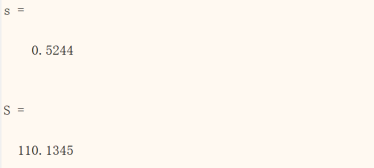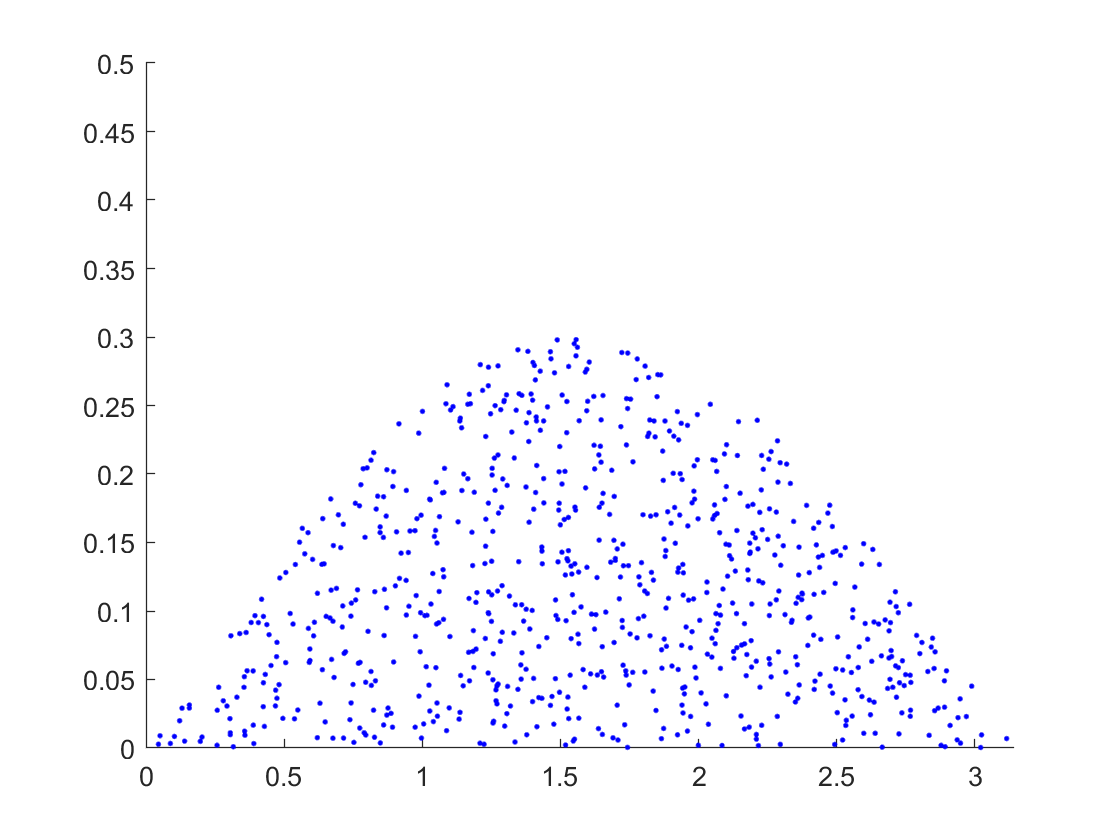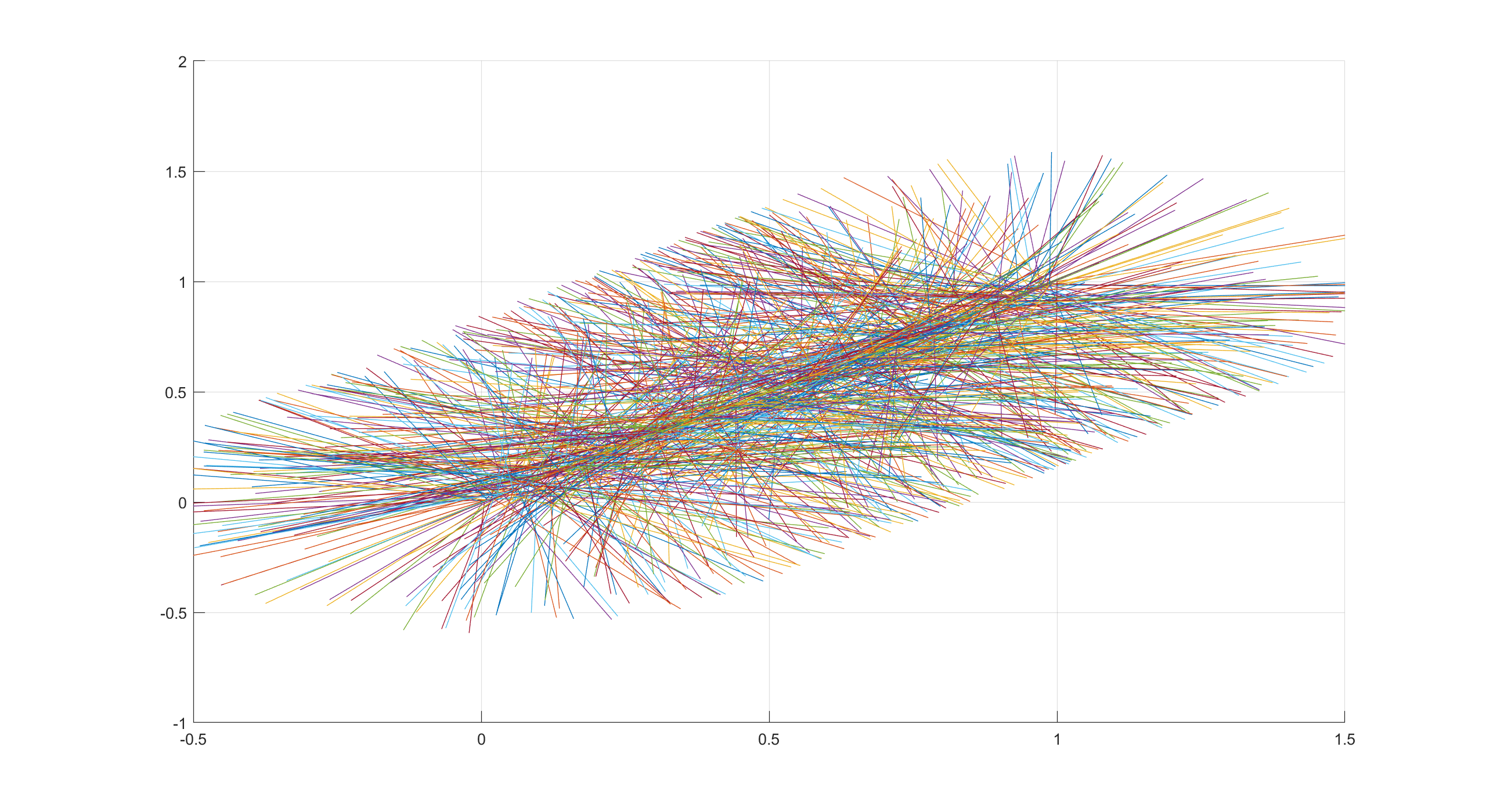蒙特卡洛(MonteCarlo)是一种应用随机数来进行计算机模拟的方法。
Example1—利润计算 已知一公司产品售价150元,初期研发成本250000元,单件原材料成本在[50,80]之间波动,市场需求符合正态分布[12000,3000],单件人工成本成概率出现[(52,0.05)(53,0.25)(54,0.4)(55,0.25)(56,0.05)]。尝试计算公司亏损的概率。
程序 1 2 3 4 5 6 7 8 9 10 11 12 13 14 15 16 17 18 19 20 21 22 23 24 25 26 27 28 29 30 31 32 33 34 35 36 37 38 clear clc profit=[]; frequency=1000; for i=1:frequency p=150; %售价 a=250000; %广告费 m=50+(80-50)*rand; %原材料成本在50-80美元之间均匀分布 r=normrnd(12000,3000); %符合正态分布 alphabet=[52 53 54 55 56]; prob=[0.05 0.25 0.4 0.25 0.05]; l=randsrc(1,1,[alphabet;prob]); %此函数以‘prob’的概率输出‘alphabet’的值 tp=(p-m-l)*r-a; profit=[profit ;tp]; %每运算一次,将上一次的计算结果带入矩阵中 end me=mean(profit); ma=max(profit); mi=min(profit); sg=std(profit); po=0; ne=0; for i=1:length(profit) if profit(i,1)<0 %遍历整个数列,数值小于1则记录1,得到亏损的概率 ne=ne+1; end end lo=ne/length(profit); %亏损的概率 t=1:frequency; T=0; plot(t,profit,'r.',t,T,'black.') A=[me ma mi sg lo] disp(['···me··','··ma··','··mi··','··sg··','··lo···'])
结果
Exercise2—代替积分 $y=2x+1$,$x \in[0,10]$,求面积。
程序 1 2 3 4 5 6 7 8 9 10 11 12 13 14 15 16 17 18 19 20 21 22 23 24 25 26 27 28 clear clc %用ment carlo算法计算积分 %x[0,10] %y[0,2x+1] M=21; N=10; j=0; p=[]; q=[]; frequency=20000; for i=1:frequency m=rand*M; n=rand*N; if m<(2*n+1) j=j+1; end p=[p;m]; q=[q;n]; end s=j/frequency S=s*M*N x=[0:10]; y=2*x+1; plot(q,p,'r.',x,y,'black-') set(gca,'Ylim',[0,21])
浦松投针问题
Example—程序 1 2 3 4 5 6 7 8 9 10 11 12 13 14 15 16 17 18 19 20 21 22 23 24 25 clear clc %蒲丰投针实验的计算机模拟 format long; %设置15位显示精度 a=1; l=0.6; %两平行线间的宽度和针长 figure; axis([0,pi,0,a/2]); %初始化绘图板 set(gca,'nextplot','add'); %初始化绘图方式为叠加 counter=0; %初始化计数器 n=2000; %和设定投针次数 x=unifrnd(0,1/2,n,1); %在[0,1/2]之间产生1*n阶矩阵 phi=unifrnd(0,pi,1,n); %样本空间Ω frame=moviein(n); %建立一个1120列的大矩阵 for i=1:n if x(i)<l*sin(phi(i))/2 %满足此条件表示针与线的相交 plot(phi(i),x(i),'b.'); counter=counter+1; %统计针与线相交的次数 frame(:,counter)=getframe; %描点并取帧 end end fren=counter/n; pihat=2*l/(a*fren);%用频率近似计算π disp(counter); disp(pihat);
程序 1 2 3 4 5 6 7 8 9 10 11 12 13 14 15 16 17 18 19 20 21 22 23 24 25 26 27 28 29 30 clear clc %普松投针--求圆周率 h=1; l=0.6; n=10000; x=unifrnd(0,1,n,1); y=unifrnd(0,2*pi,n,1); X=[]; Y=[]; A=[]; B=[]; j=0; %figure; %axis([-0.5,1.5,-h,2]); %初始化绘图板 %set(gca,'nextplot','add'); %初始化绘图方式为叠加 for i=1:n if x(i)+l*sin(y(i))>=h || x(i)+l*sin(y(i))<0 j=j+1; end X=[X;x(i)+l*cos(y(i))]; Y=[Y;x(i)+l*sin(y(i))]; A=[A;x(i),X(i),Y(i)]; %plot([A(i,1),A(i,2)],[A(i,1),A(i,3)]) grid on; end A; fre=j/n pai=2*l/(h*fre)
输出效果








